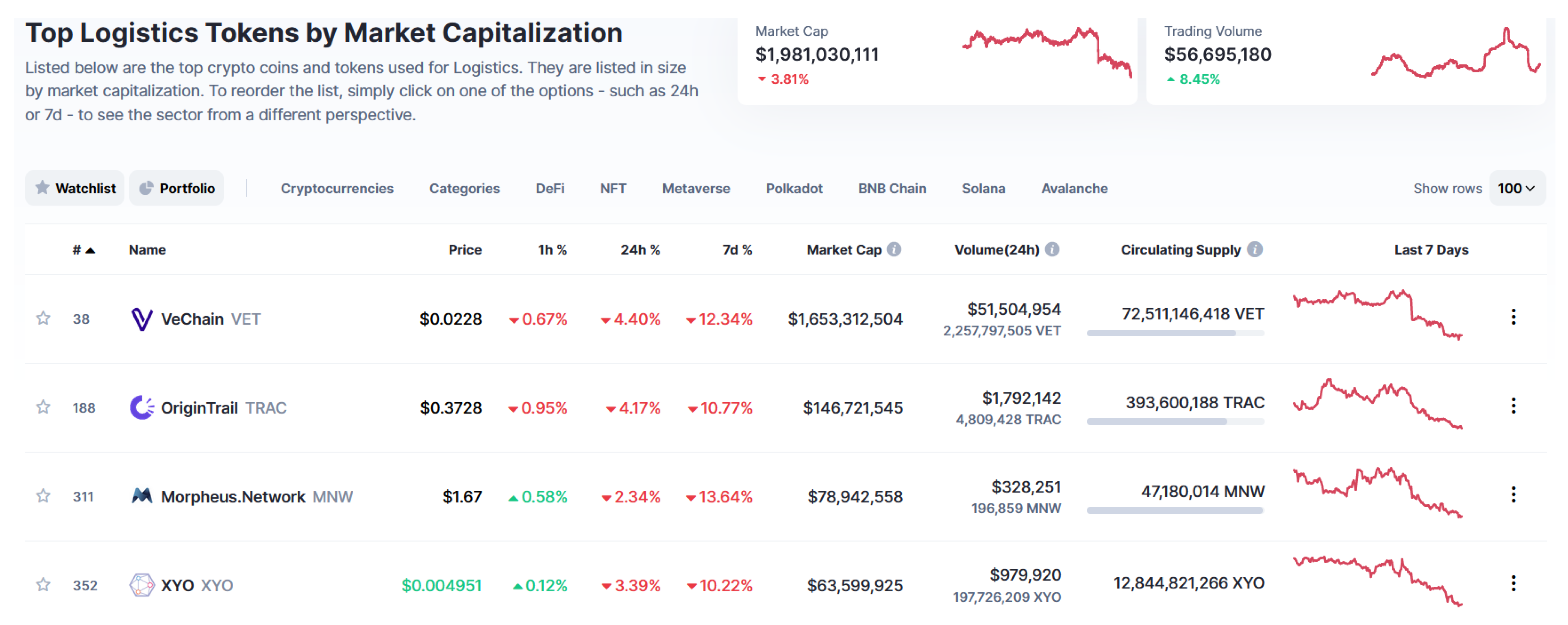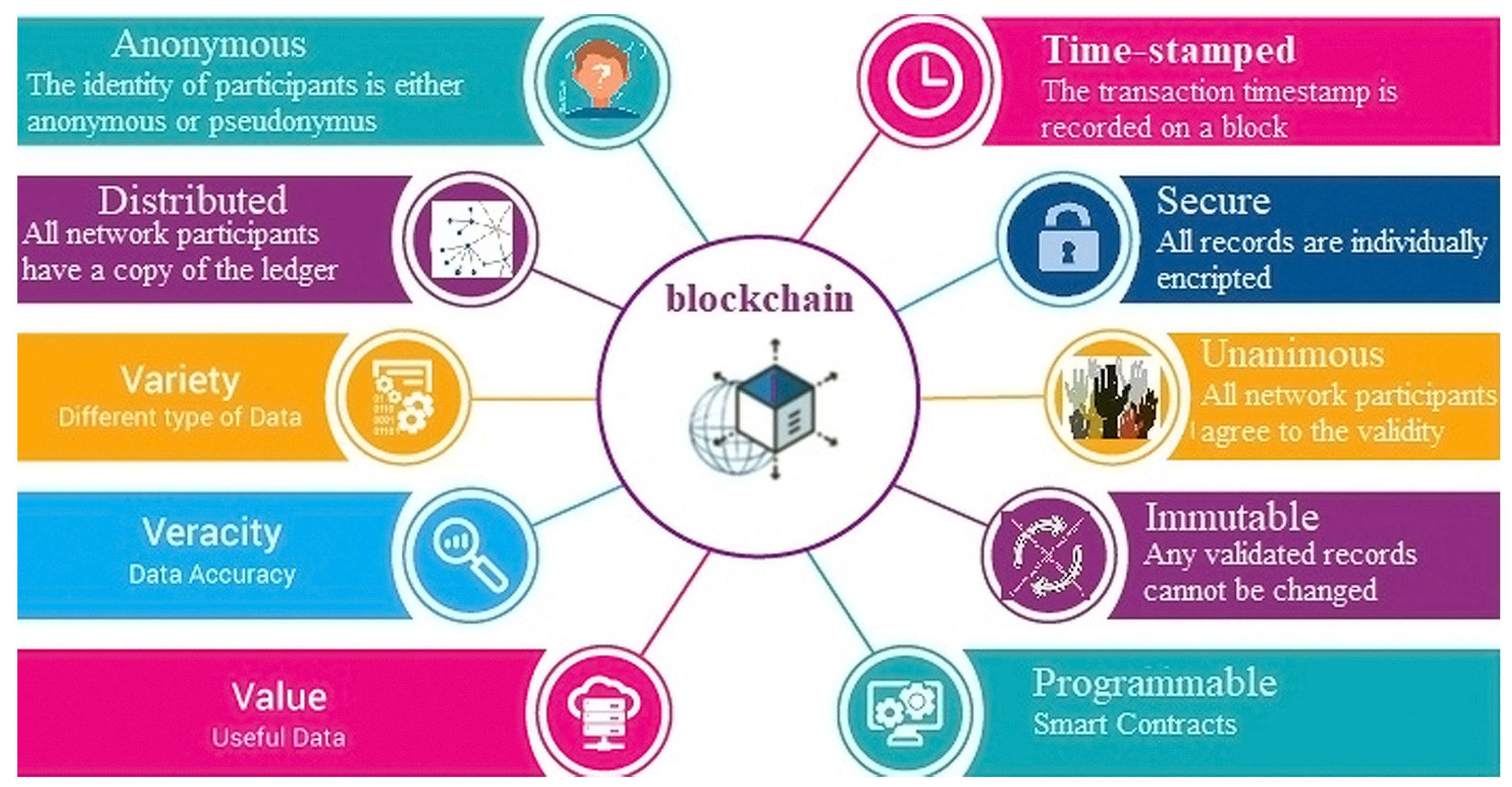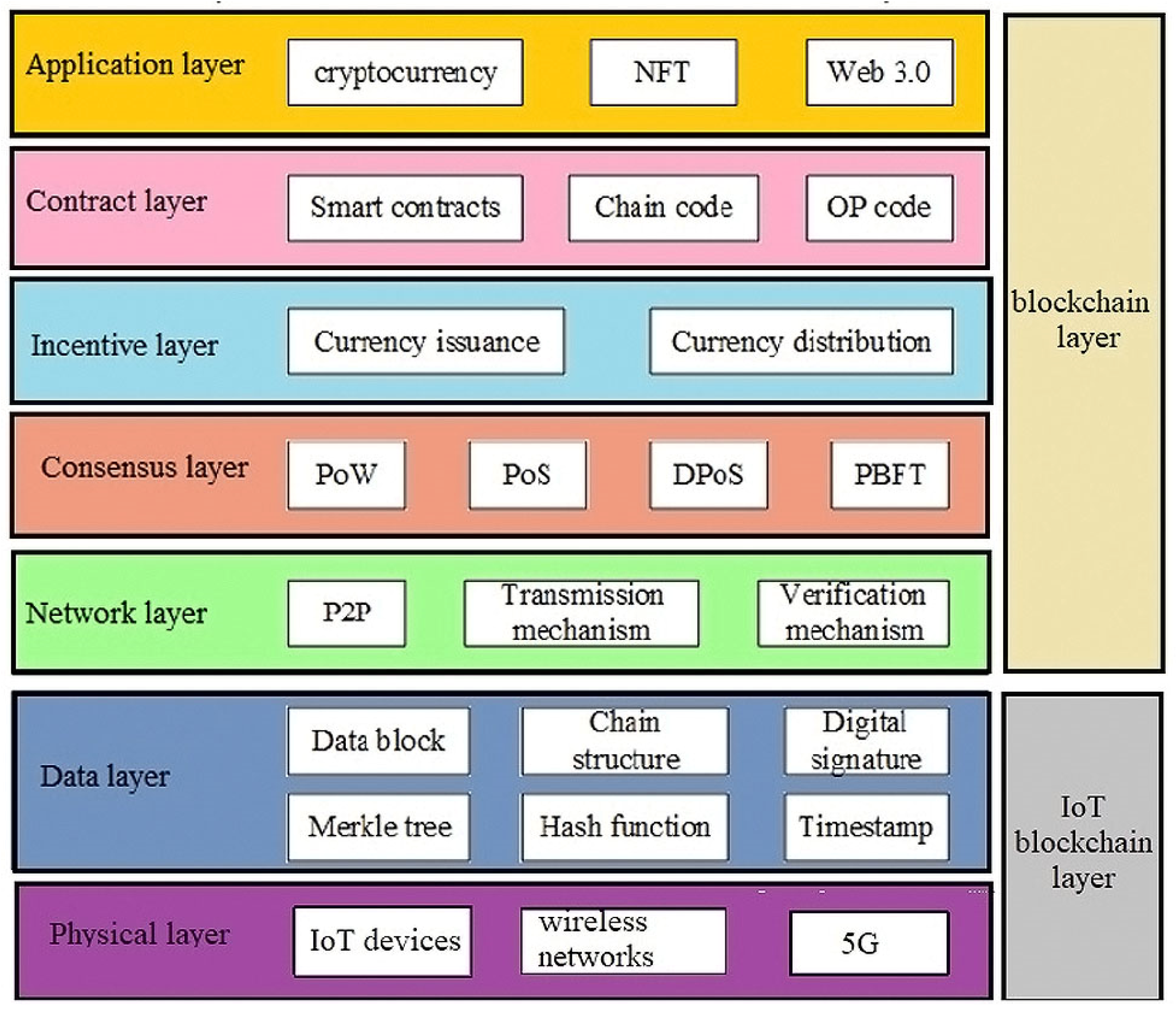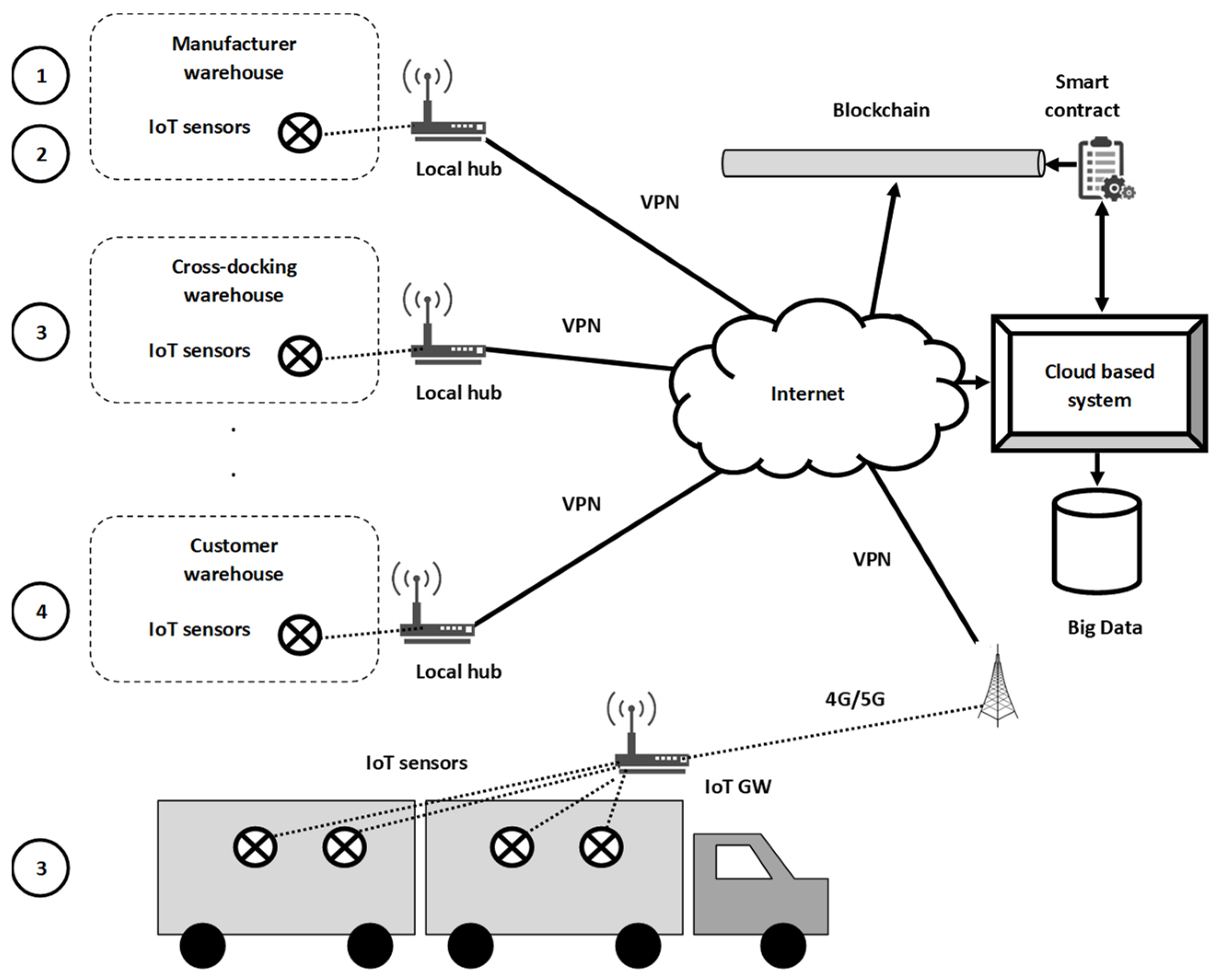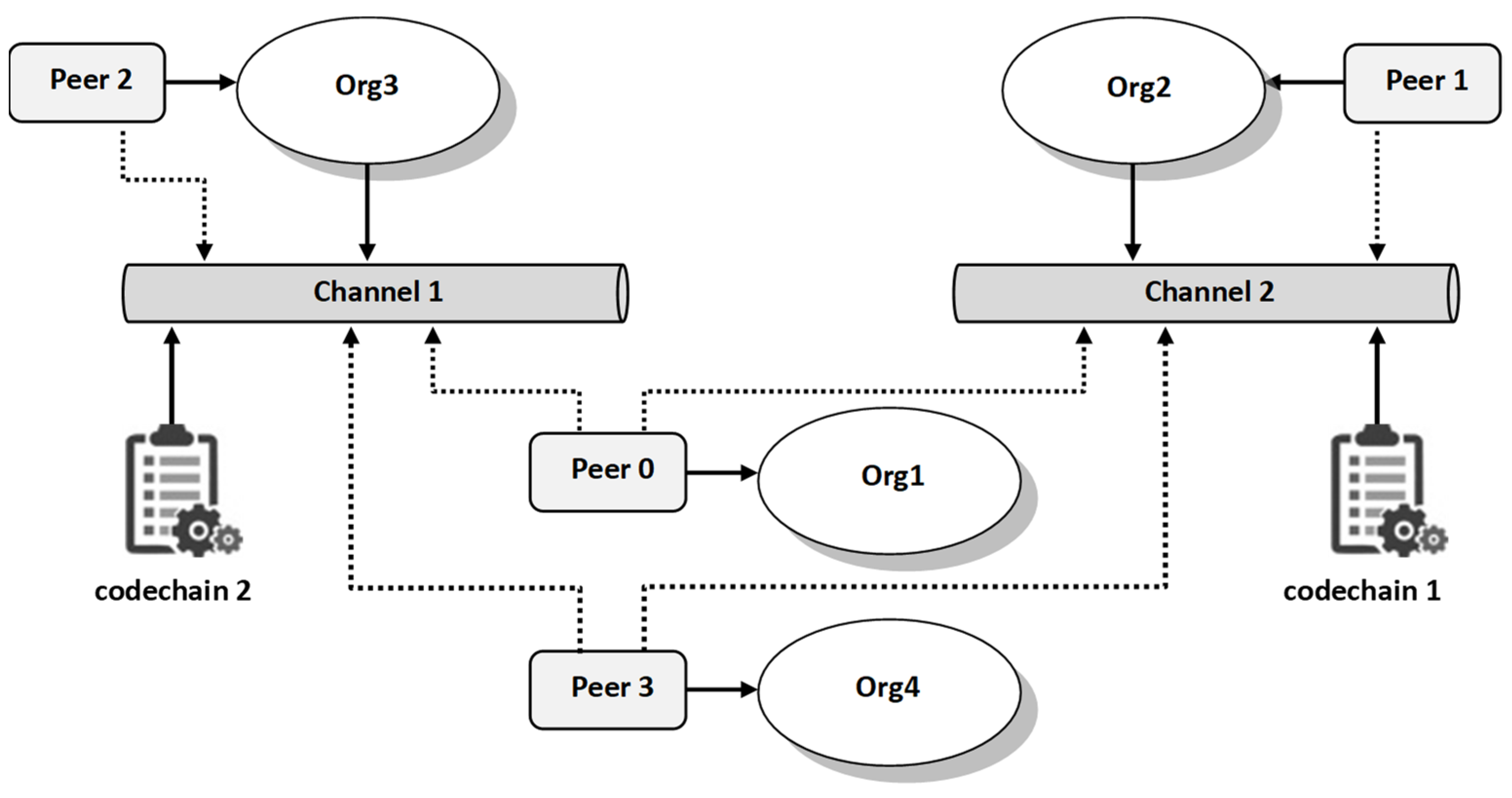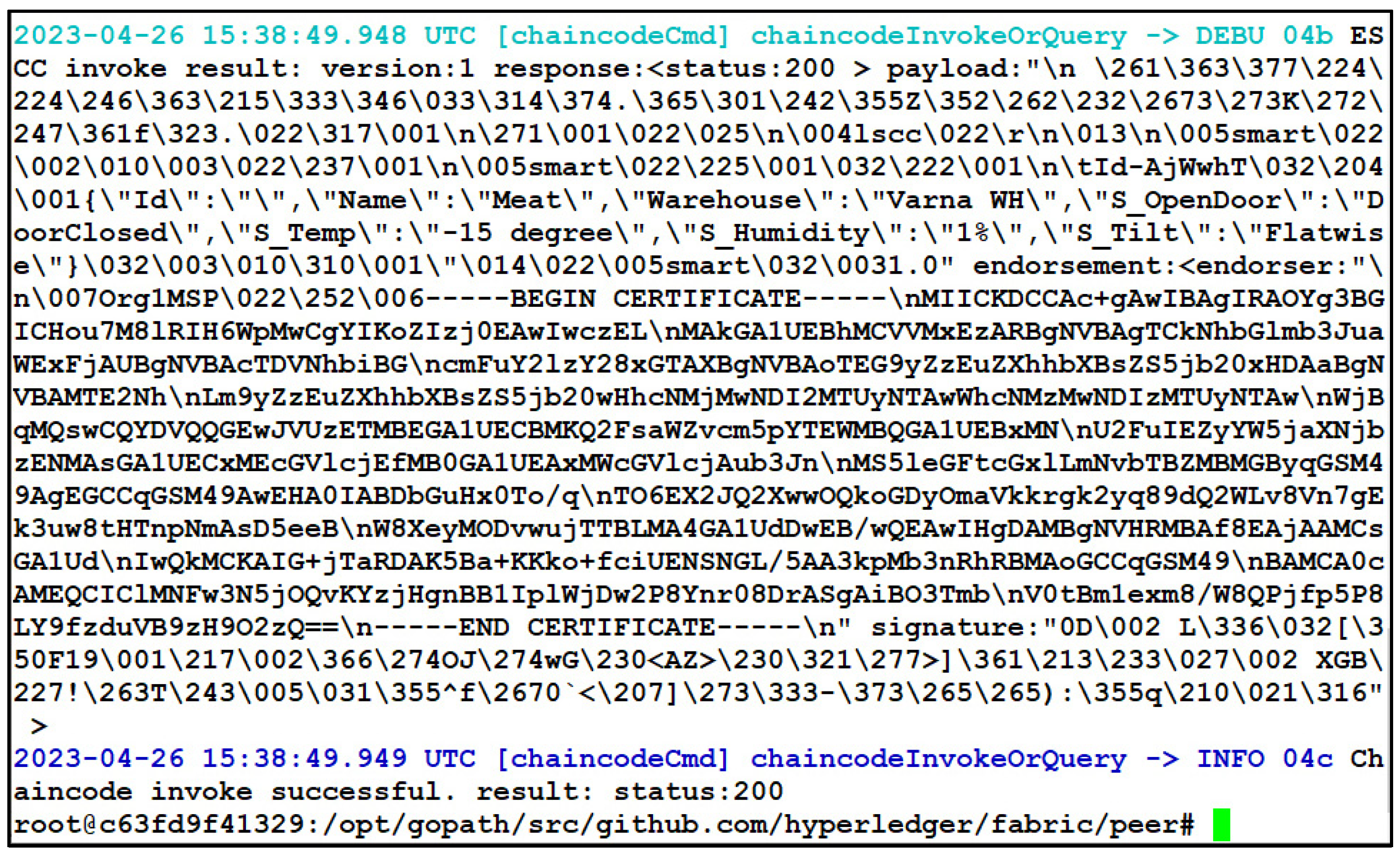1. Introduction
With the advent of the Internet of Things (IoT), the world is experiencing a technological revolution. One of the industries that IoT has impacted tremendously is logistics. Globally, the application of IoT in the logistics business was estimated at USD 34 billion in 2019, and according to
Forbes forecasts, this share is expected to grow to USD 63.7 billion by 2026 [
1].
Some goods that require special attention have individual storage spaces in which the temperature, humidity and arrangement are strictly specific. These include dangerous goods, medicines and goods with a limited shelf life. Warehouse layout is important to be able to establish the flow of their transportation from the manufacturer’s warehouse to their destination at the end user. In this context, IoT-based logistics focus on warehousing, receiving and loading goods, tracking their location and condition, and inventorying their availability. That is why the main applications of IoT in the logistics process are related to shipment/cargo tracking, the monitoring of shipments in cross-docking warehouses, inventory control, theft protection and product tracking. This ensures transparency of the entire process and minimizes the risks of theft, loss and damage to the tracked objects.
While barcodes are an effective technique used for inventory, which is a core process in logistics, wireless devices such as radio frequency identification (RFID) tags, eSIM and global positioning system (GPS) sensors offer logistics companies the ability to track the location, in real time, of shipments (objects), to monitor the temperature, relative humidity and other conditions of the containers in which they are located, whether in storage or during their transportation. With IoT technology, algorithms based on artificial intelligence can process these data to help route management, optimize cargo storage (especially those that require specific conditions), manage the company’s vehicle fleet in real time, and monitor the integrity of the cargo/shipment and of the entire supply chain.
From the perspective of reducing the risks of loss, theft and damage for which the company insures its cargo, the application of IoT with blockchain solutions implemented with smart contracts improves the transparency and security of the entire process, increases the trust between the logistics company and the insurance company, and reduces the possibility of fraud. The combination of both technologies is a prerequisite for the automation of warehouse operations, the optimization of both resources and the use of space in the premises, and the improvement of inventory and fleet management. The application of both technologies would turn cross-docking warehouses into modern intelligent logistics centers.
In this paper, an abstract model for the integration of blockchain technologies and IoT is proposed. By applying it, the authors’ proposed logistics business model based on IoT and smart-contracts on blockchain, suitable for managing cross-docking warehouses and transportation, is developed.
2. Related Works
Logistics in the general sense of the term is understood as the planning, development and implementation of a strategy in order to carry out a given operational activity and achieve a desired end result. In the context of this paper, logistics is understood as a management concept based on the integrated management of material flows. In this context, opportunities are provided to define different subsystems of the logistics system, specifying them according to the phases of movement of material flows (supply, production, distribution) or according to objects (physical elements and processes), namely those related to stocks, transport, warehousing, etc.
Existing commercial automated solutions are based on BigData, 5G and cloud platforms [
2,
3]. The data generated by the objects meet the characteristics of Big Data—large volume, high speed of generation, variety, etc. The data thus collected provide a complete view of every detail of the entire process by tracking the objects (shipments, expensive tools, containers, fleet) and tracking the location of the workers. The analysis of these data allows problems to be detected—where they occur, in what sequence of actions, and with which employees. If this is carried out in real time, immediate management response to an emergency can save facilities or personnel from perishing. If carried out offline, it leads to process optimization that will make the business more efficient, more profitable and safer for employees and the environment.
It was only after 2019 that approaches for using blockchain in logistics processes and the related transport of shipments/cargoes begun to be sought. In [
4], the goals and participants in a cloud platform for logistics are analyzed, the factors that influence the sharing of information are systematized, and the advantages for the logistics industry that the creation of a logistics cloud platform based on blockchain would provide are presented. In [
5], the impact of the use of blockchain technology and the possibility of its development in sustainable logistics and supply chain management are discussed. In [
6], the application of blockchain technology in the logistics process is analyzed regarding the main challenges in logistics, such as order delay, goods damage, errors and multiple data entry. In [
7,
8], based on dynamic game theory, a concept for a new decision-making environment is proposed regarding the viability of intertwined supply networks and interconnected supply chains as a core part of the logistics process.
A pilot blockchain-based solution is presented in [
9]. It has been applied in an agricultural logistics park in China. This comprehensive park integrates the government, enterprises, information platform, financial institutions and agricultural research units, and brings together various social service organizations. The control of agricultural finance, supply chain of agricultural products, and the traceability of agricultural product quality are ensured and there is an expected reduction in rural poverty from this decision.
Blockchain technologies are also finding their place in reverse logistics. In [
10], a tracking mechanism for medical equipment renewal activities based on blockchain and smart contracts is presented. Various stakeholders (medical device manufacturers, hospitals, retailers, etc.) share critical reverse logistics information in a verifiable and secure manner. In [
11], the remanufacturing/repair recovery option of mobile phones is considered and a back-end data sharing architecture based on smart contracts on private blockchain technology is proposed to track all remanufacturing/repair processes.
In [
12], problems in the logistics process related to the confidentiality and security of personal information, customer information and product details are considered because they are shared between different logistics stakeholders during the logistics process. A secure communication between the interested parties in the logistics process based on a smart contract on the blockchain is proposed.
The European Parliament approved the Markets in Crypto-Assets (MiCA) regulation, which enters into force in 2024 [
13]. This regulation aims to protect consumers, and safeguard financial stability and market integrity. This legal act ensures that crypto transfers, as is the case with any other financial operation, can always be traced and suspicious transactions blocked. At the moment, there are 13 active cryptocurrencies that finance logistics processes, and there are 5 more inactive ones [
14], the most popular of which are presented in
Figure 1.
The first is the universal platform VeChain (VET) [
15], which works with smart contracts. The platform uses two tokens, VET and VTHO, to manage and create value based on its public Ve-ChainThor blockchain. VeChain has been able to demonstrate massively boosted efficiency, traceability and transparency across data trails, supply chains and within novel kinds of ecosystems, such as those in San Marino targeting UN SDGs. Origin Trail [
16] is a web3 infrastructure project based on blockchain technologies and a permissionless open source network that increases transparency and security. OriginTrail runs on three blockchains: Ethereum, Polygon and Gnosis. It is designed for the supply chain sector and uses innovative uniform asset locators (UAL) to improve asset localization.
Based on the related works presented, it can be concluded that blockchain solutions in the field of logistics are few and relatively recent but offer different directions of application. A recurring pattern is observed in these solutions, different from the traditional cloud-based model. In light of this pattern, an abstract IoT and blockchain based model could be proposed because such a suitable model has not yet been proposed.
3. Traditional Cloud-Based Model for Logistics and Transportation
A traditional logistics process of parcel/cargo delivery, managed centrally with a cloud platform and based on IoT, is presented in
Figure 2.
The logistics process is managed using a cloud platform and goes through the following stages:
Order to supplier;
Request for quantity in the manufacturer’s warehouse. Checking stock availability. The ordered quantity moves to transit warehouse/packing area. Here, the goods can be tracked with RFID. They are prepared for transport by installing IoT sensors. It is loaded onto a pallet/container and from there into a truck;
It is transported, and depending on the destination, the pallet/container can be stored in a cross-docking warehouse and loaded again on another transport. With IoT sensors, the storage and transportation conditions of the goods are controlled in real time;
Delivered to the final destination warehouse. The goods are unloaded and unpacked. When storing in the recipient’s warehouse, the information from the attached IoT sensors is no longer needed because the sensors in this warehouse are monitored. Here, again, goods can be tracked with RFID.
Data in IoT networks are generated at high speeds. Since many IoT devices have limited memory resources, they cannot store the captured data indefinitely, but rely on a stream-based processing concept. Thus, data storage systems must either have large input buffers to temporarily store new data for monitoring and further processing, or have the necessary capacity to handle voluminous data streams at the local hub/GW at the edge of the network. In the traditional model, these data are stored with big data.
Modern logistics center and cargo tracking architectures combine familiar technological means such as wireless communications, mathematical and simulation models for analysis and design, and big data analysis. Based on IoT, they are characterized by high requirements for cyber security and real-time operation. The tracking of cargo along the chain from the manufacturer to the customer through cross-docking warehouses, the insurance of the cargo, the risks during their transportation of damage, and the theft and loss of goods require a search for new approaches. These approaches must provide real-time observability, registration of the circumstances in which a given event occurred and the exact moment, the traceability of the responsibility for the event that occurred, an impossibility of forging and adding data, etc. Using blockchain and BigData together can solve some of these problems [
17,
18]. All these requirements clearly indicate that blockchain technologies, in combination with IoT, will solve these problems without increasing the cost of existing solutions, without changing the existing logistics infrastructure, and without the need to increase the qualifications of personnel or change their daily work behavior.
4. Proposed Abstract Model Based on Blockchain and IoT
Big data analytics is the use of techniques to extract qualitative data from large, unstructured and semi-structured data sources, such as the data needed to manage all aspects of the logistics process. The data are heterogeneous; however, in a blockchain, it is possible to store these in a common structure. Blockchain has a number of advantages (
Figure 3); most importantly, however, it stores data permanently in such a way that these cannot be deleted or modified by other parties without the knowledge of the blockchain participants.
The proposed abstract model (
Figure 4) integrates a smart contract with blockchain and IoT to perform secure transactions in any business and register heterogeneous data. In [
19,
20], an abstract model is presented, according to which blockchain technology works on six layers—the data layer, network layer, consensus layer, incentive layer, contract layer, and application layer. Technologies related to IoT work on the lower two layers of the OSI model (data link and physical layer). In the abstract model proposed by the authors, the integration of the two technologies is considered in seven layers—the upper five layers represent the operation of the blockchain technology, and the lower two layers form the IoT blockchain layer, which provides the communication channels between the IoT sensors, the physical wireless network and the blockchain network. At this layer, the data are collected and transmitted for recording on the blockchain network. In this way, the proposed abstract model represents the process of integrating the two technologies regardless of the chosen blockchain implementation (the type of consensus mechanism, the way the smart contract is written, whether it is a private or public blockchain, whether it is tied to cryptocurrency or not, etc.). On the other hand, it makes blockchain management independent of the selected sensors, the implemented physical network, the selected wireless communication technology, etc. Furthermore, sensors can be of different types—GPS sensors, RFID sensors and IoT sensors for BLE, ZigBee, 6loPan, etc.
5. Design of Logistics Model, Based on Blockchain and IoT
The proposed model modifies the traditional cloud-based model as shown in
Figure 5. Real-time data collected from IoT sensors are recorded in the blockchain and processed using a smart contract. IoT sensor data are sent at fixed time periods that can be set by the management platform, with IoT sensor data for temperature, humidity, tilt when out of tolerances (which are pre-set in the local system) being sent over time. When transporting from the vehicle, data from IoT sensors for weight change and door opening are also sent over time. Data are logged in the cloud/web-based system and stored for subsequent analysis and verification of an event’s occurrence. In this way, the circumstances of the occurrence of an unwanted event, which may lead to damage to the goods, their destruction or their theft, are registered. Thus, the employees directly involved in this process can be held accountable, and compensation can be claimed against an insurer who was given access to the critical data through the smart contract running on the blockchain.
The implementation is carried out on the Hyperledger Fabric private blockchain. The architecture of Hyperledger has a modular structure, which allows the development of flexible solutions for different areas. Modules have different purposes, such as authentication, encryption, consensus mechanisms, database management, etc. Hyperledger has lower processing complexity compared to similar platforms, as transactions can be processed in parallel. Business logic is provided by smart contracts, which are called “chaincodes”. The implementation of the smart contract is in the Go language, which, because of the compiler, achieves a better performance compared to interpreters. In order for the smart contract to run, it must be installed on a peer and instantiated. External applications can then make calls to it.
Figure 6 shows the implementation of the proposed model as a Fabric network. The model does not reflect the relationship with a specific insurance policy, claim for the occurrence of an event or claim processing. Only the option through the smart contract for the insurer’s automated access to information to reliably prove the moment of occurrence of an insured event and the circumstances that led to it is reflected.
The Peer0 (“Insurer”) monitors events but cannot write data to the channel. In channel 2, the telemetry data are recorded when the goods are transported using a truck (peer 1). The records are made at fixed intervals or when an event occurs, for example, values going out of a certain range, changing position or opening a door.
The IoT peer (peer 2) records the information about the assets in each warehouse in channel 1. Logistics center (peer 3) has read-only access to all channels.
In the case of damage to goods or incorrect work of an employee, the logistics center will be able to determine the moment of occurrence of the event, as well as the reason for it. The impossibility of changing the information guarantees its authenticity.
Individual peers are implemented as docker containers (
Figure 7). This provides an independent and encapsulated runtime environment that ensures application security. The communication between the individual components of the network is based on the TCP/IP protocol suite, which, in turn, enables the deployment of the application in a distributed environment.
To test the functionality of the smart contracts, a special docker
cli container is used, in which commands are executed to send requests to the smart contracts.
Figure 8 shows a successful execution of a request to write an object-goods when it is loaded into the means of a truck (recording in channel 2). In the request, information is sent about the state of the product (meat) loaded from the Varna warehouse, and the current values of certain parameters. The object attributes that are stored (name, warehouse, temperature, humidity, door opening, tilt) are shown. A successful execution is indicated with a result code of 200.
Testing and detecting a good according to its name is analogous, as shown in
Figure 9. In the example, two goods with the same name (cheese), but loaded in a truck from different warehouses (Central WH and Sofia WH), were detected.
The experiments show the correct functioning of the smart contracts, which proves the applicability of the proposed model for logistics in real conditions.
6. Conclusions
The logistics process is extremely suitable for applying modern technologies, such as IoT, big data, blockchain, 5G, etc., because the large volume of data must be processed in real time, and the confidentiality and security of the personal information of customers and information about goods are a priority. At the same time, the information is shared or transferred from one participant in the logistics process to another. Smart contracts, blockchain, IoT sensors and related wireless technologies have the potential to provide a solution to these problems.
In the context of Industry 4.0, the proposed seven-layer abstract model for solutions based on smart contracts on blockchain and IoT can be used to manage a number of modern businesses. It registers the movement of data in the relevant business at multiple levels, which include multiple stakeholders in the management of the relevant business, ensuring the security and confidentiality of information about participants, objects and goods, increasing the effectiveness of the monitoring and management process of the relevant business.
In this paper, a logistics process management model is proposed, consistent with the presented abstract layered model. A smart contract implementation on HyperLedger Fabric is presented, which proves both the applicability of the proposed layered model and the effectiveness of the application of smart contracts on blockchain for logistics business.
